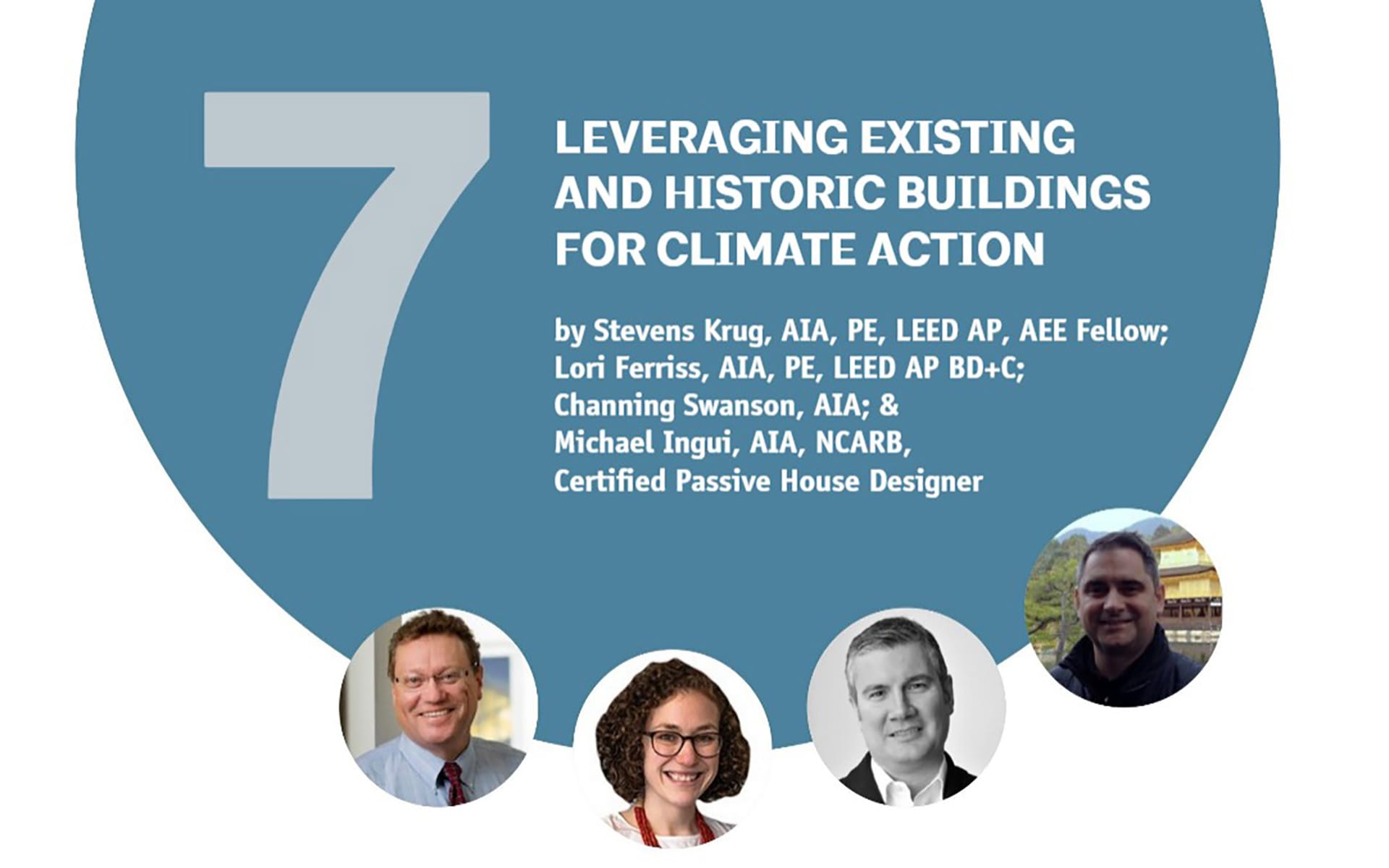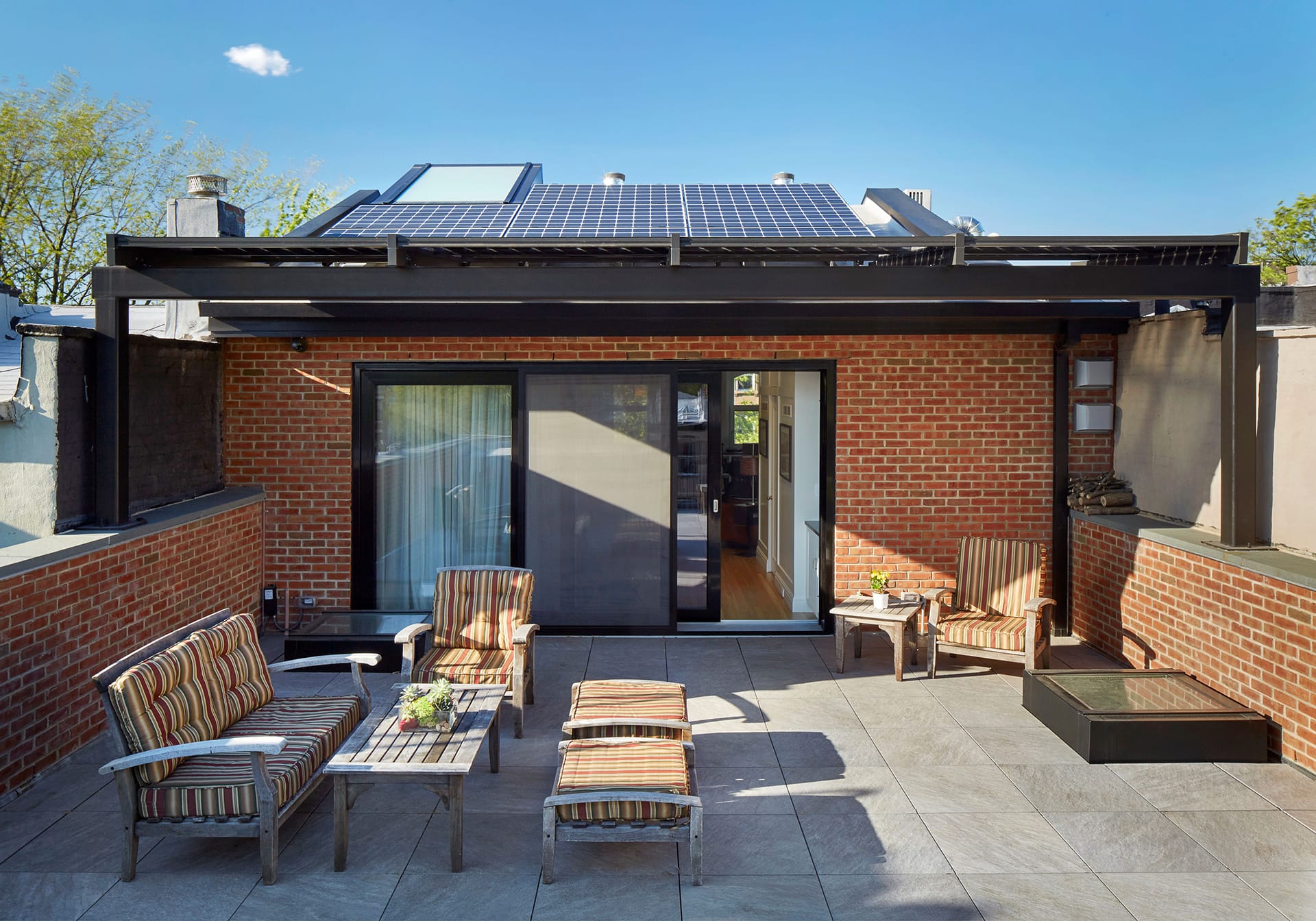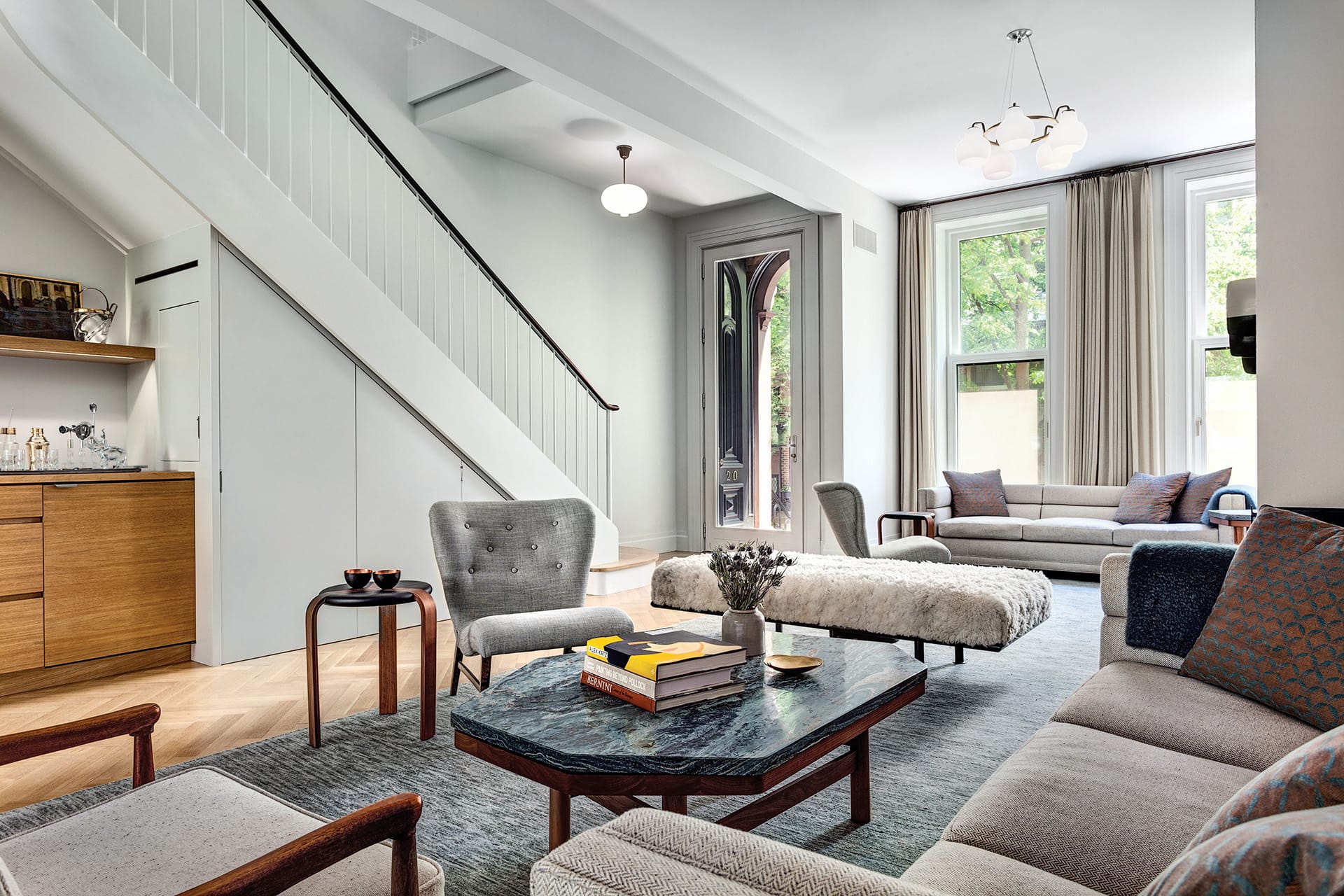Leveraging Historic Buildings for Climate Action
.png)
.png)
Passive House strategies are often the key to creating highly custom, long-lasting, environmentally friendly homes. Preserving historic fabric and mitigating the environmental impact of buildings is as essential to our practice as creating beautiful architecture.
In this Carroll Gardens Passive Plus House, the restored front façade, stoop, and carefully designed full-story addition seamlessly blend with the neighborhood. Passive measures and triple-paned glazing from Zola Windows and Doors allowed us to create a light-filled, dramatic rear façade. On the roof, a solar canopy from Brooklyn Solarworks generates electricity and provides shade from solar heat gain. Minimizing the need for complex mechanical systems allowed us to create bright, open interior spaces.
We discuss this project, and our repeatable approach to Passive House, in the January edition of AIA New York State's publication Return to the Future. Alongside Lori Ferriss, Channing Swansson, and A. Stevens Krug, "Leveraging Historic Buildings for Climate Action" emphasizes the importance of retrofitting historic buildings to pursue net-zero energy.

Leveraging Historic Buildings for Climate Action
Examples of reuse of historical elements and adaptive reuse can be found throughout history. Using appropriate physical assets created by previous generations is important to reducing greenhouse gas emissions.
https://issuu.com/aianys/docs/aianys_dec_21-jan_22_quarterly_final_1-27-22

.jpg)
